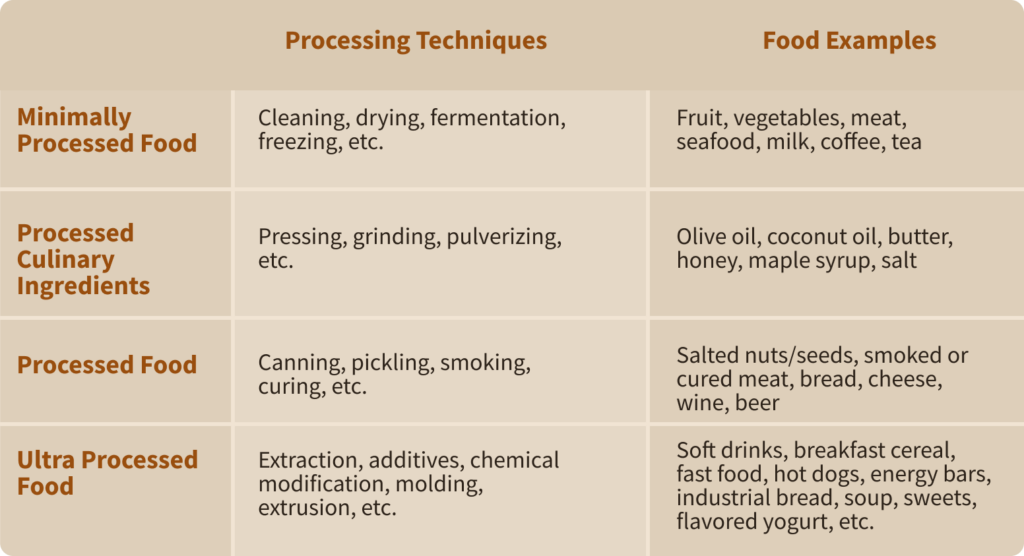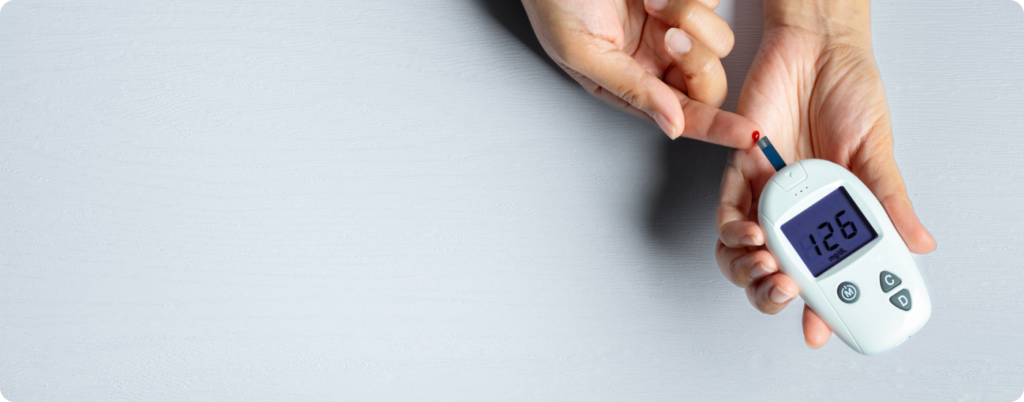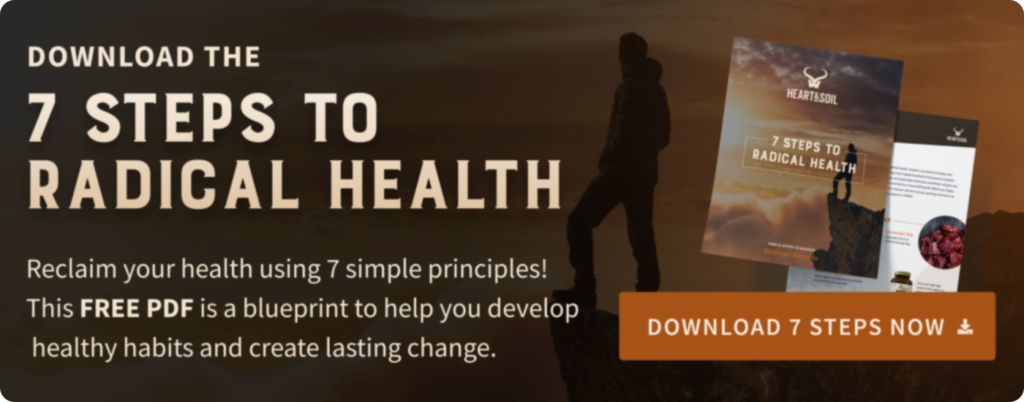PLEASE NOTE: The information in this blog is for educational purposes only. It is not a substitute for professional medical advice. Consult your healthcare provider if you’re seeking medical advice, diagnosis, or treatment.
Nearly 60% of caloric intake from Americans now comes from foods that didn’t exist until the last few decades (1, 2). Let that sink in.
From pastries to soda, chips, energy bars, cakes, and candies, ultra processed foods have taken the US (and the world) by storm. These cheap, hyper-palatable “foods” are now the norm. However, convenience and low prices come at a cost for human health.

In this article, you’ll learn:
- How ultra-processed food impacts your health
- How to avoid processed food
- 7 steps to radically improve your health
Let’s take a look!
What is Ultra Processed Food?
Just about every food undergoes some level of processing. So, the idea of avoiding all processed foods is not feasible. But, there are various levels of processing with different implications to be aware of.
The NOVA framework is the most common guide for labeling processed foods (3):

According to NOVA, “ultra-processed foods (UPFs) are industrial formulations made mostly or entirely with substances extracted from foods, often chemically modified, with additives and with little, if any, whole foods added” (4).
For a variety of reasons, ultra-processed food can wreak havoc on your health.
Why Processed Food is a Major Problem
Most ultra-processed foods are made by major corporations with the goal of maximizing profits; they’re frequently unbalanced nutritionally and use persuasive marketing (5, 6). They’re also designed to be eaten just about anywhere, meaning they can take the place of traditional meals or lead to excessive snacking (7, 8).
Consumption of these foods is emerging as a key contributor to major challenges like diabetes, obesity, cardiovascular disease, and even certain types of cancer (9, 10).
Obesity
About 2 billion adults are overweight, and 650 million are obese (11). The economic and healthcare costs of obesity are around $2 trillion per year.

Due to their taste and large portion sizes, ultra-processed foods are prone to overconsumption (12). They can also easily be eaten while driving, working, or watching TV and often displace more nutritious foods from the diet (13).
Many studies have shown an association between ultra-processed food consumption and obesity and weight gain (14, 15, 16). Obesity can also predispose people to strokes, diabetes, heart attacks, and other serious issues (17).
CVD
One of the potential consequences of obesity is poor cardiovascular health (18). Today, nearly 33% of deaths are from cardiovascular diseases (19).
Ultra-processed foods may promote cardiovascular disease for a variety of reasons (20, 21, 22, 23):
- Trans fat, added sugar, and other nutrients may increase the risk of CVD.
- Ultra-processed foods are related to CVD risk factors like hypertension and obesity.
- Excessive processing can lead to the formation of contaminants (like acrylamide) that may contribute to CVD development.
- BPA found in packaging is being explored as a contributing factor to CVD and is listed by the European Chemicals Agency as “a substance of very high concern.”
The Framingham Offspring Study also noted that each additional daily serving of ultra-processed food was associated with a 7% increased risk for CVD (24). Another study from France found a 12% increase in risk per serving.
Diabetes
Another emerging connection is between diabetes and ultra-processed food (25). By 2030, an estimated 578 million people will have diabetes, and it is currently a leading cause of death and disability (26, 27).

One meta-analysis found that high consumption of ultra-processed foods led to a 37% increased risk of type-2 diabetes (28). Another meta-analysis found a 31% increase in risk from high ultra-processed food consumption (29).
Cancer
Cancer is the cause of around 10 million deaths per year, and cancer cases are expected to double over the next 20 years (30). Despite these startling numbers, an estimated 50% of cancer cases may be preventable with a healthy diet and avoiding lifestyle habits like smoking and physical inactivity (31,32).
Although evidence is mainly epidemiological (considered the lowest quality), a connection is emerging between cancer and ultra-processed food consumption (33, 34, 35).
Mental Health
Mental health challenges like anxiety and depression are also major concerns for many in today’s world. These challenges appear to share a connection to the challenges listed above.

Depression is commonly found alongside obesity, diabetes, lack of exercise, and high ultra-processed food intake (36, 37). Various epidemiological studies have found an association between artificial sweeteners, processed foods, and the risk of depression (38, 39).
A lack of healthy foods may lead to inadequate intake of essential vitamins and minerals needed for mental health and brain function (40).
How to Avoid Processed Food (8 Ideas)
Avoiding processed foods while traveling or managing a busy work schedule or family life can be very challenging. Thankfully, there are numerous strategies to overcome these obstacles and maintain a routine of healthy eating. 8 options to consider are:
1. Stop Buying Junk Food
This one is painfully obvious. If you don’t have junk food lying around the house at all times, then you’re much more likely to avoid it. Instead, choose more filling and nutrient-dense snacks like fresh fruit, yogurt, or cheese.
2. Don’t Shop When You’re Hungry
Shopping while you’re hungry can lead to impulse purchases of ultra processed foods. They may make your movie night more enjoyable, but can leave you feeling equally drained or unsatisfied.
3. Shop on The Outside Aisles of the Store
The outside aisles of the grocery store are generally where you’ll find the most nutrient-dense foods like meat, seafood, dairy, fruits, vegetables, and other minimally processed foods. Many of the inner aisles are loaded with sugary cereal, refined grains, and other packaged foods.
4. Shop at Farmers Markets

Another shopping strategy is to buy the majority of your groceries from a local farmers market.
While the farmers market can still have some highly processed foods, the majority of the products will be minimally processed, whole foods from your area. You’ll find a wide variety of natural foods like fresh produce, high-quality meat, and local honey.
5. Prioritize Whole Foods
One of the key issues with ultra-processed foods is that they lack nutrients and don’t leave you feeling full. The perfect antidote to this is to center your diet around whole foods like meat, seafood, eggs, and other satiating options.
This strategy not only provides you with essential nutrients, but it helps fend off cravings and gorging on junk food.
6. Cook Your Own Meals

Although fast food joints and restaurants are convenient, you’re often getting lower quality ingredients compared to if you do your own shopping and cooking. Cooking can certainly be more time-consuming, but it allows you to prioritize healthy food in your diet. Nutritious meals don’t have to be complicated.
7. Meal Prep
Meal prep can be a lifesaver if you have a busy work, athletic, or family schedule. Setting aside some time each week for meal prep can set you up for success by allowing you to eat a more nutritious diet and avoid fast food.
8. Find or Make Better Alternatives
Are you an ice cream lover or a fan of potato chips? The good news is that you can easily craft healthier options on your own or find better alternatives in stores.
For example, instead of buying ice cream with a laundry list of mysterious ingredients, you can make your own ice cream with a few simple ingredients.
7 Steps to Radical Health
The 7 Steps to Radical Health is a simple framework aimed at allowing people to not only reclaim their health but thrive. The steps are:

Step #1: Eat Organs Daily
Step #2: Eliminate Processed Foods
Step #3: Build Healthy Habits
Step #4: Dial In Your Diet
Step #5: Push Yourself Physically
Step #6: Level Up
Step #7: Achieve Your Why
One of the cornerstones of this framework is the removal of ultra-processed food given the negative impact it can have on your health, energy levels, and more. Removing these foods can seem daunting, but it can be an extremely effective way to improve yourself mentally, physically, and spiritually.
If you’d like to learn more about these seven steps to transform your health, download the full PDF containing specific goals and action items to help track your progress.
Say Goodbye to Ultra Processed Foods
With massive amounts of technology, frightening levels of disease, and easy access to ultra-processed food, the modern world would be unrecognizable to your ancestors.
One of the most significant changes is the emergence of processed foods. Countries all over the globe are now getting most of their energy from “foods” that didn’t exist until the last century or so.
Unsurprisingly, these changes come with consequences. As we saw, ultra-processed foods are emerging as a key contributor to obesity, cardiovascular disease, diabetes, and other major avoidable challenges.
Thankfully, with a few simple changes, you can construct a nutritious diet that leaves you feeling happy and energized.
Subscribe to future articles like this: